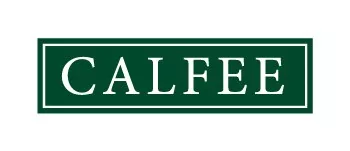- within Intellectual Property and Real Estate and Construction topic(s)
- with readers working within the Technology and Utilities industries
On September 6, 2024, the IRS issued Revenue Procedure 2024-35. It announced that the Affordable Care Act (ACA) affordability threshold is increased from 8.39% for 2024 to 9.02% for 2025. This is important news for employers subject to the ACA employer mandate because it potentially increases the cost at which a self-only coverage option must be available under a group health plan to avoid the possibility of a penalty on the employer.
The ACA Employer Mandate and ACA Affordability Requirement
The ACA "formula" provides that an applicable large employer must offer each full-time employee and his/her dependents the opportunity to enroll in minimum essential coverage that satisfies a "minimum value" standard and is "affordable" or be potentially exposed to penalties.
ACA affordability is based on the lowest-cost, self-only coverage option under a health plan. This requires an analysis of the employee-required contribution for the lowest-cost, self-only coverage to make sure it does not exceed a specified amount. In addition, employers must take into account wellness plan incentives and opt-out payments for purposes of affordability.
Under the ACA, the specified amount is a percentage based on the employee's household income (initially set at 9.5% in 2014, adjusted for inflation). In response to employers' concerns about having to obtain the household income amount of their employees, the IRS provided three safe harbors for employers. These safe harbors include the following:
- W-2 Safe Harbor. Generally, an employer meets this safe harbor if the lowest-cost, self-only coverage that provides minimum value during the entire calendar year does not exceed the annual IRS-specified percentage of the employee's Form W-2 wages from the employer for the calendar year.
- Rate of Pay Safe Harbor. Coverage will be deemed affordable if the employee's monthly contribution is equal to or less than the IRS-specified percentage of monthly wages. For hourly employees, monthly wages are determined by multiplying the employee's hourly rate by 130. For salaried employees, an employee's monthly salary is used.
- Federal Poverty Line Safe Harbor. An employer satisfies this safe harbor if the employee's required contribution for the lowest-cost, self-only coverage that provides minimum value does not exceed the IRS-specified percentage of the federal poverty line for a single individual for the year.
| ACA Safe Harbors | 2024 | 2025 |
|---|---|---|
| Federal Poverty Line | Maximum contribution 8.39% of federal poverty line on monthly basis ($101.94/month if mainland U.S.) | Maximum contribution 9.02% of federal poverty line on monthly basis ($113.20/month if mainland U.S.) |
| Rate of Pay | Maximum contribution 8.39% of monthly wages | Maximum contribution 9.02% of monthly wages |
| W-2 | Maximum contribution 8.39% of W-2 wages | Maximum contribution 9.02% of W-2 wages |
Penalties
If an applicable large employer fails to offer affordable coverage for one or more full-time employees, then the employer is subject to the Employer Shared Responsibility Payment for each full-time employee for which coverage is not affordable and the employee obtains subsidized Marketplace coverage. Like the affordability threshold, this penalty amount is indexed for inflation. The initial penalty amount of $3,000 (in 2015) is now $4,350 for 2025, a decrease from 2024's annualized penalty of $4,460 per affected employee. Please remember that while the penalty is stated as an annual amount, it is determined on a monthly basis.
Practice Pointer
Plan sponsors should take immediate action to determine if their 2025 plan design for premium cost-sharing does not create an issue with the new affordability threshold.
The content of this article is intended to provide a general guide to the subject matter. Specialist advice should be sought about your specific circumstances.



